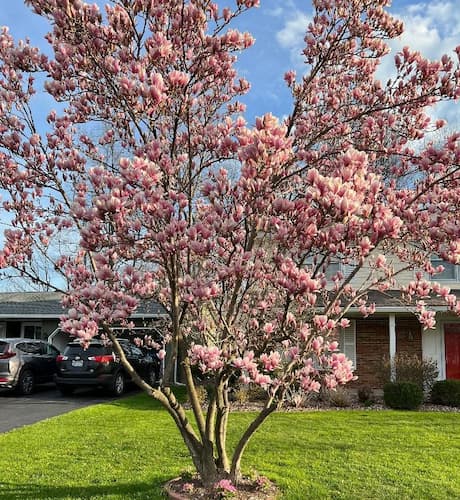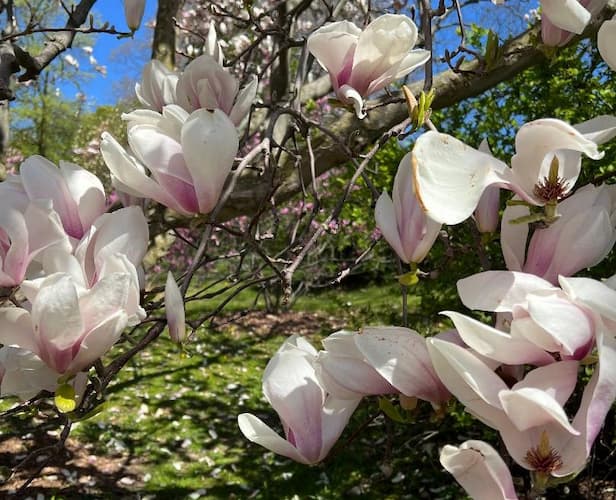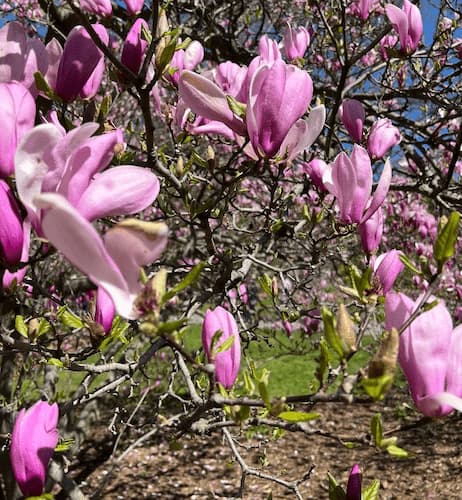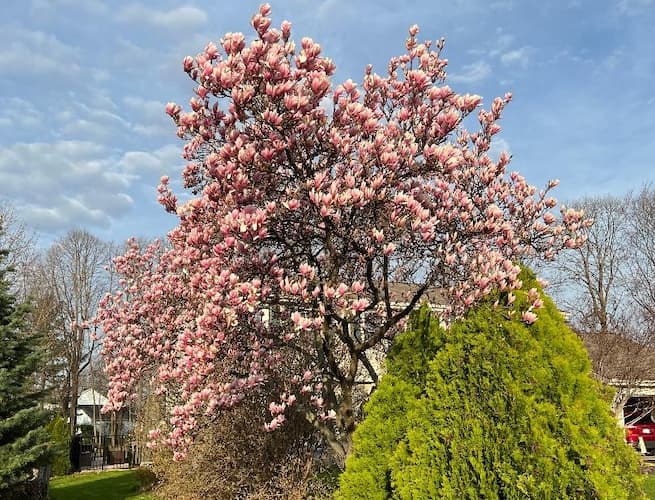How to Grow and Care for Magnolia Trees

About Growing Magnolia Trees in Your Yard
Magnolia trees are majestic and stately. Native to the Eastern United States and Southeast Asia, there are over 80 species. Flowering Magnolias are a sight to behold. You’ll love the profuse spring blooms. The fragrant flowers cover the tree before its green leaves begin to grow out. This easy-to-grow tree requires little maintenance. Established trees are drought tolerant. It looks great in the front or back yard of your home, as well as in parks, and in front of offices and professional buildings. With this guide on “How to Grow Magnolia Trees”, you’re on your way to growing a magnificent landscape plant.
With many varieties to choose from, they can be grown in most areas of the country. Choose a variety that grows well in your climate. The Southern Magnolia, for example, grows well in hotter areas of the country. However, it is not recommended for colder, northern regions.
Did you know? Magnolia flowers do not have true petals and sepals. Rather, the flower has “Tepals”.
Long-lived: The average life expectancy of a magnolia tree is 80 to 120 years.
Magnolia Flower Colors: Cream, pink, purple, white, yellow, and multi-colored.
Flowers Bloom: Spring
Tree height: 15 – 80 feet tall, depending upon variety.
Plant Hardiness Zones: 7 – 9
Botanical Name: Magnolia Grandiflora

Magnolia Tree Propagation
Magnolia trees are propagated from seeds or cuttings.
Growing them from seed is quite involved and takes a lot of effort. Seeds are not viable once they dry out. So, you need to take seeds from an existing tree. This is done in the fall. The spent flowers produce a seed pod. The pods open up and you will find a bright red berry inside. Take the seeds from the berries before they have dried out.
Here’s how to grow magnolia trees from seed:
- First, in the Fall, remove seeds from the berries.
- Next, soak the seeds in lukewarm water overnight.
- Then, remove the outer coat by rubbing the seeds along a piece of screen or a piece of fine-grain sandpaper.
- Then, place the seeds in a pot of moist sand.
- Finally, the seeds need to go through seed stratification. Place the pot in the refrigerator or a cold garage for at least 3 months.
Cuttings are much easier. Take a cutting from the plant. Place it in a container with rich soil. Keep the soil moist. After several weeks, the cuttings will develop a root system. More on rooting plants from cuttings.
Trees grown from seeds can take as long as 15 to 20 years before you see the first Magnolia flowers. Trees grown from cuttings take much less time, but still, need years to the first bloom. As a result, most people buy young trees from garden stores.

How to Grow Magnolia Trees
Mature Magnolia trees are maintenance-free. Like most other trees, young saplings benefit from a little attention.
It is best to plant young trees in the spring.
Select a planting site that is in full sun. However, the trees tolerate partial shade. Also, plant it in a location where people can admire the beautiful spring blooms. That’s why so many homeowners grow magnolia trees in their front yard.
Young plants grow best in rich, organic, and well-draining soil. Dig a hole twice the diameter of the root ball. Loosen up the soil in the hole and mix in an ample amount of compost. Place the tree into the hole at the same depth that it originally was. Tamp down the soil, and water thoroughly. Water regularly during the first few months’ of growth to help its root system to develop. More on transplanting trees.
When grown in good soil, the trees do not need any additional fertilizer.
Ideal Soil pH: 5.5 – 6.0.
Pruning Magnolia Trees
Like any other young plant growing magnolia trees benefit from occasional pruning. Prune the trees in the spring or early summer after the current year’s growth stops. Cut and remove any dead leaves and branches. You can also prune the tree to improve its shape.
There is no need to remove spent magnolia flowers. Allow them to die and fall off naturally.
If possible, avoid pruning live branches from mature trees. This can actually harm them.

Insects and Plant Disease
Magnolia trees are fairly insect and disease resistant.
Potential disease problems include bark disease, nectaria canker, wetwood (bacterial), root rot in wet soils, and magnolia scale.
Related Articles
Also, people who read this article will like:
How to grow your favorite tree
Buy Magnolia Trees – Live trees, bushes, and shrubs, hundreds of varieties
Please support our site. Shop for:
- rmmatthews100@hotmail.com
- 585-721-6528
- Rochester, NY
©1999-2024 GardenersNet.Com, All Rights Reserved

